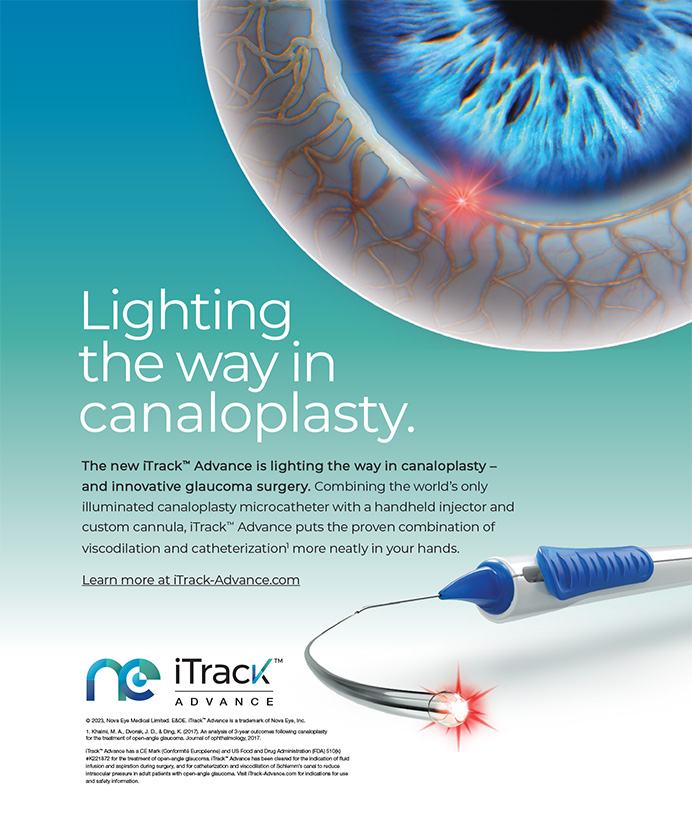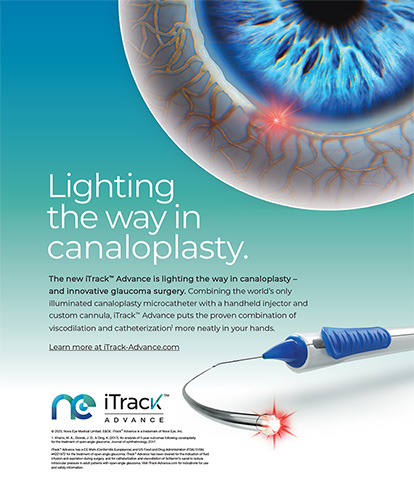The world’s population is growing. During my life span, it has more than doubled—from about 3 billion in 1960 to more than 7 billion today. Our population will continue to grow, reaching more than 9 billion people worldwide by 2050, a United Nations report predicts,1 and affecting health care substantially.
If the world’s population is three times as great in 2050 as it was in 1960, we might expect the need for health care to be three times as great. However, changes in the demand for health care are also affected by the structure of the population, and the way the demographic is trending, the demand may be even greater. While the population is increasing, the distribution of the population by age is changing, and this will have significant effects on ophthalmology.
In this article, I extrapolate figures on the German population, for which there are good registry data for the past 100 years. To some extent, the German population can be used as a surrogate for the European population in general; however, there are variations from country to country.
In 1910, the shape of the German population could be compared to a fir tree—wider at the low end, representing a large number of young people, and tapering toward the top, representing relatively few elderly (Figure 1). This shape changed over a relatively short time, and only 40 years later, it looked quite different (Figure 2). The effects of two devastating wars contributed to a reduction in the overall size of the population, but fewer babies were born not only during the wars but throughout this period. By the time another 55 years had passed, in 2005, the shape of the population had become more like a column than a fir tree (Figure 3).
A German woman today will give birth to fewer than 1.4 children on average. To maintain a stable population structure, two or more children would be needed. If current trends are projected into the future, in 2050, there will be even fewer births, and a larger proportion of the population will be elderly (Figure 4).
CHANGING DEMOGRAPHICS
Why is the population increasing despite a declining birth rate? The simple answer is that our life expectancy is increasing. In the past 20 years, life expectancy for newborns has increased by 4.6% for girls and 6.9% for boys. More staggering statistics are for those aged 75 or greater, as life expectancy has increased by 17.8% for women and 26.2% for men.
Greater increase in life expectancy in the older population has had a dramatic effect on the age make-up of our population. Over that same 20 years, the population younger than 18 has decreased by 14.9%, and the working-age population has decreased by 3.2%; however, the younger elderly population (ages 65- 74 years) has increased by 32.7% and the older elderly population (ages 75 years and greater) by about 42.4%. Taken collectively, the total population has increased only slightly.
All these changes affect demographics. We have fewer births, a growing life expectancy, enlargement of the older age groups, and, perhaps most dramatically, the aging of the baby boomer generation. This large bolus of the population, born between 1946 and 1964, is now in its 50s, 60s, and 70s and has a powerful effect on the increase in life expectancy.
CHANGES FOR OPHTHALMOLOGY
These population and demographic changes mean challenges ahead for ophthalmology. How will we care for this increased and increasing population?
First, a bit about the structure of ophthalmic care in Germany. There are approximately 6,000 ophthalmologists in Germany, of whom 44% are female. Ophthalmologists make up about 4% of all physicians, with responsibility for about 4% of health care expenditures. Most are in private practice, but about 12% are on hospital staffs. Of the approximately 100 hospitals in the country, roughly one-third are university based.
These 6,000 ophthalmologists perform more than 30 million consultations per year. With a total population of 82 million, ophthalmologists see about half of the population once a year. But, we do not see the whole population, and attendance at consultations varies by age. Babies are seen for screening examinations, and children are again screened for strabismus and refractive errors. Although the working-age population does not consult ophthalmology often, a dramatic increase is seen in consultations among older adults. About 60% of women and 50% of men ages 75 to 80— that is, more than half the population at those ages— see an ophthalmologist every year.
The same pattern is not true for all of health care. Whereas other specialties see increases of two- and threefold in consultations in the elderly, the increase in the same age group is sixfold in ophthalmology.
PREVALENCE OF EYE DISEASE INCREASES WITH AGE
The eye is an evolutionary wonder; it works very well, and it lasts a lifetime—but unfortunately only a stone-age lifetime. Because the prevalence of the most common ophthalmic diseases increases with age and the risk, for example, of blindness from glaucoma increases by tenfold per decade of life, age plays a dramatic role in the diseases cared for by ophthalmology.
We reviewed the causes of blindness and severe low vision in Germany about a decade ago,2 and we concluded that approximately 33% of blindness and low vision cases were due to age-related macular degeneration (AMD). Diabetic retinopathy accounted for about 14%, and this percentage may be on the rise due to the increased prevalence of metabolic syndrome in Germany. Glaucoma and other causes of optic atrophy accounted for about 18% of blindness and low vision. Lastly, although this may be hard to believe in Germany in the 21st century, 5% of blindness and low vision was due to cataract. Approximately 33% of cases were attributed to other causes.
CONTINUED INCREASE
A look to the future suggests that the prevalence of most or all of the diseases mentioned earlier will continue to increase.
Cataract. Nowadays, the majority of the population lives long enough to develop cataracts significant enough to need surgery. This is true not only in Germany and the other countries of Europe but for the worldwide population, including underdeveloped countries, as the mean life expectancy is now more than 60 years. Therefore, worldwide, there are about 7 billion people who will potentially need cataract surgery in two eyes. The burden of care for cataract alone is tremendous.
Age-Related Macular Degeneration. The prevalence and incidence of AMD in the older population is unclear, but as noted earlier, about 33% of blindness cases can be attributed to AMD. As living to 100 becomes more common, the incidence and prevalence of AMD will likely increase.
Glaucoma. A number of studies have examined the prevalence of glaucoma in white, black, and Hispanic populations. The increase with age is dramatic, especially in the black and Hispanic populations, in which, by the age of 75 to 80, 25% have glaucoma. This age group used to be considered old, but now it is just the lower part of the old-age group. As the incidence of glaucoma triples per decade of life, again, the burden of care is tremendous.
Diabetic retinopathy. Last year was the first time in the history of mankind that there were more people with metabolic syndrome, suffering the effects of being overweight, than experiencing malnutrition. Therefore, even in underdeveloped countries, the prevalence of diabetes and diabetic macular edema are continuing to grow.
COPING SUCCESSFULLY
How successful is ophthalmology in coping with the increasing prevalence and incidence of these diseases? In Germany, the total number of blind patients and those with low vision has increased by about 10% since 1993. A closer look at this statistic shows that blindness differs significantly by age. Although there is an increase over the total population, blindness goes down in the young, working, and youngold age groups. However, it goes up dramatically in the old-old age group.
Had there not been this change in the shape of the population—had the population remained stable with the fir tree shape of decades ago—the numbers would be different. If the structure of the population had stayed the same as it was in 1960, the prevalence of blindness and low vision would have been reduced rather than increased.
Today, prevention of blindness has improved, and an array of available treatments helps to preserve and protect vision. However, the effects of aging counteract our efforts in treating these diseases. It is important to recognize that ophthalmologists are an effective group of physicians, as we are indeed reducing blindness and low vision. The same cannot be said for physicians treating cancer and heart disease. However, the population is growing and aging in such a way that our efforts are easily negated.
How do we address this issue? We must make ophthalmology a priority for our politicians. I cannot speak for other countries, but in Germany, we have not been successful at this. Over the past 15 years, there has been an increase of 22% in the number of physicians. Therefore, on some level, the government has recognized a demand for more physicians, because more health care is needed. But, when the increase is broken down by specialty, general medicine has increased by 30.1%, gynecology by 23%, dermatology by 27.6%, and psychiatry and psychotherapy by 108.2%. The increase in the number of ophthalmologists has been only 12.9%.
CONCLUSION
There are four take-home messages to be considered based on all the numbers presented here.
No. 1: The reduced birthrate in most countries in the world is far outweighed by an increased life expectancy.
No. 2: Ophthalmology is highly affected by these changes, more than other fields of medicine.
No. 3: There is a growing demand for eye care, and this demand is among the fastest growing in medicine.
No. 4: We have effective prevention and therapy strategies, but demographic changes counteract our success.
What is needed to address these changes? We need successful research and development of new treatments and cures, earlier detection methods, and other advances in patient care, but it is goes beyond these measures. We need more eye care practitioners. I doubt we will be able to increase by 33% the number of ophthalmologists in the next 10 years, and therefore, we will need to delegate more tasks to technical staff and introduce more modernization of care methods.
What is perhaps most important is that we need more lobbying of government in favor of ophthalmology. We need to explain this changing demographic situation, and its effects on health care and eye care, to our politicians.
Reproduced with permission from CRST Europe’s July/ August 2014 edition.
Norbert Pfeiffer, MD, PhD, is a Professor of Ophthalmology at the University Medical Center Mainz, Germany. Dr. Pfeiffer may be reached at norbert.pfeiffer@unimedizin-mainz.de.
- World population projected to reach 9.6 billion by 2050. United Nations Department of Economic and Social Affairs. https://www.un.org/en/development/desa/news/population/un-report-world-population-projected-toreach- 9-6-billion-by-2050.html. Accessed July 3, 2014.
- Knauer C, Pfeiffer N. Blindness in Germany--today and in 2030 [Article in German]. Ophthalmologe. 2006;103(9):735-741.


